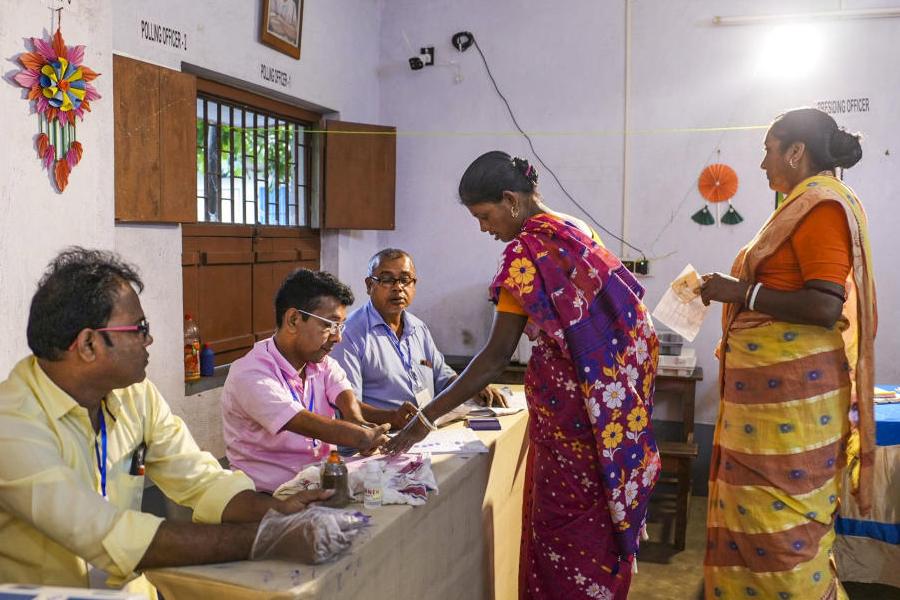 |
| GENDER DISCRIMINATION: Most past studies on coronary ailments have concentrated only on men |
Kim Kachmann-Geltz did everything right. She ran five miles a day, ate wheat toast and oatmeal, stayed slim, never smoked. Her blood pressure was perfect. Her genes, she thought, were good: Her great-grandmother had lived to 102.
“I’m the last person in the world I could ever imagine having heart disease,” said Kachmann-Geltz, of Hilton Head, S.C., who is 39 and the mother of three children. But since 2003 she has suffered from angina, chest pain caused by inadequate blood flow to the heart. In addition, one chamber of her heart has shown signs of enlargement, and her heart valves do not work properly.
She takes four heart medicines and may eventually need more. Even with the drugs, chest pain keeps her from running. She walks instead, and does yoga.
“It’s not a death sentence,” she said. “You don’t have to live your life depressed”. But her outlook is a mixed message. She describes her prognosis as good, yet also says the disease may shorten her life. “We just don’t know,” she said.
Her case is unusual: Angina more often strikes older women. Still, coronary artery disease is the leading cause of death in women over 25, killing more than 250,000 a year in the United States. Before they reach their 60s, women are less likely than men to develop heart problems, but once the disease does occur, women often fare worse than men.
Since 1984, more women than men have died each year from heart disease, and though overall coronary death rates have dropped in recent decades, most of the improvements have been in men.
Puzzling differences have emerged between men and women with heart disease, making it plain that past studies, mostly on men, do not always apply to women. Researchers have come to realise that to improve diagnosis and treatment for women, they must sort out the differences.
“Every time we turn around, we find more gender differences, so it’s important to study,” said Dr. C. Noel Bairey Merz, a cardiologist at Cedars-Sinai Medical Center in Los Angeles. Among the differences are these: Women with chest pain and other heart symptoms are more likely than men to have clear coronary arteries when tests are performed, a surprising result that suggests there may be another cause for their problems. When women do have blocked coronary arteries, they tend to be older than men with similar blockages and to have worse symptoms, including more chest pain and disability. These women are also more likely to have other problems like high blood pressure, high cholesterol and diabetes, which may make surgery riskier. And they are more likely than men to develop heart failure, a weakening of the heart muscle that can be debilitating and ultimately fatal. When women have bypass surgery or balloon procedures for coronary blockages, they are less likely than men to have successful outcomes, and they are more likely to suffer from certain side effects.
Blood tests that reliably pick up signs of heart damage in men do not always work in women. Women seem much more likely than men to develop a rare, temporary type of heart failure in response to severe emotional stress. “We don’t have good explanations for these gender differences,” said Dr. Alice K. Jacobs, a cardiologist at Boston University. She said one reason women have not fared as well as men after bypass surgery and balloon procedures may be that women are smaller, and so are their blood vessels, which may tend to clog up again more easily after the procedures.
In addition, surgeons performing bypasses in women have been less likely to use an artery from inside the chest wall, because it is smaller and harder to work with ? even though using the chest artery instead of a leg vein gives most patients better odds of long-term survival.
In the past, Jacobs said, cardiologists had only big balloons and bulky tubing to open blocked vessels, and some may have been too large for women. “Now we have tiny wires, balloons and stents, and it's less of an issue,” she said, adding that success rates in women were improving.
Women like Kachmann-Geltz have become an important focus of study. Her doctors believe she has an insidious type of heart disease, more common in women than men, that researchers are just beginning to understand. These patients have chest pain and abnormal stress tests. Their heart muscle is starved for oxygen, yet their coronary arteries look wide open on an angiogram, the test in which doctors inject the vessels with dye and then X-ray them to spot blockages.
Some of these women also score poorly on the Duke Activity Status Index, which gauges their strength and ability to exercise by asking questions like whether they can walk up a flight of stairs or run a short distance. A low score is a reliable predictor of more heart problems to come.
For those with symptoms, the real, underlying problem may be a disorder called microvascular disease, a narrowing or stiffening of the smaller arteries that nourish the heart, vessels too tiny to show up on an angiogram. In microvascular disease, the small vessels lose their ability to dilate and increase blood flow to the heart. The cause does not seem to be fatty deposits like the ones that can block the coronary arteries. Rather, the muscles in the arterioles thicken, a process called remodelling, and the walls may stiffen and begin to close in. The result is ischaemia, lack of blood flow. Over time, it increases the risk of heart failure and attacks.










